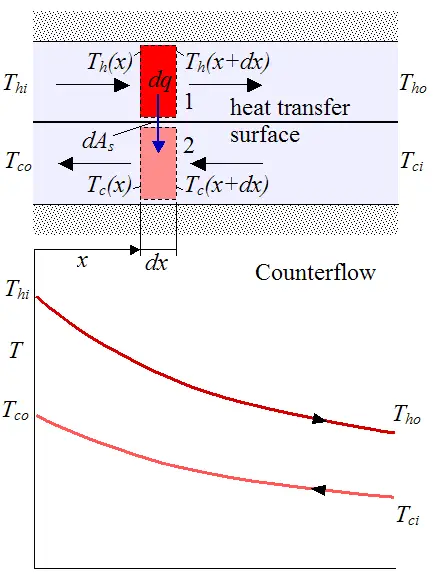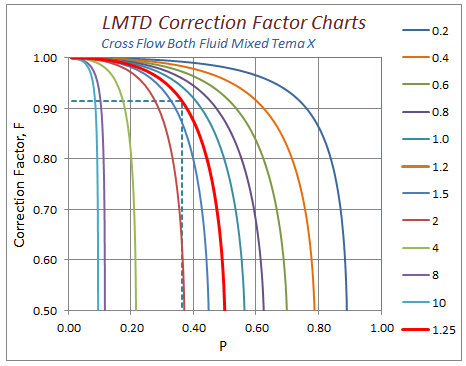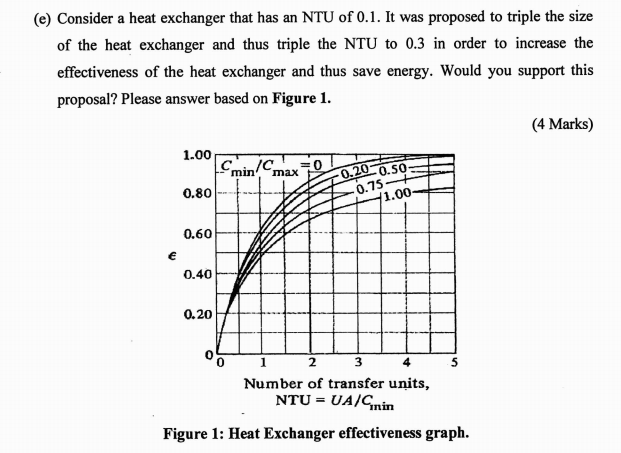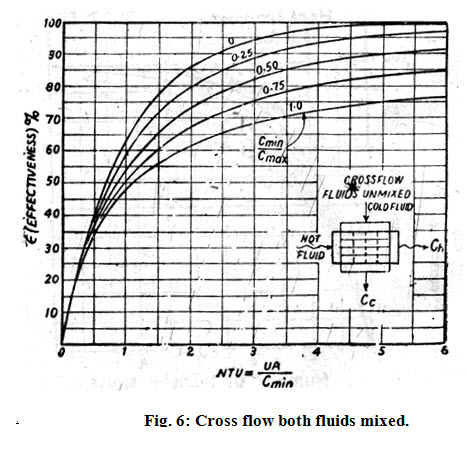Countercurrent exchange is a mechanism occurring in nature and mimicked in industry and engineering in which there is a crossover of some property usually heat or some chemical between two flowing bodies flowing in opposite directions to each other.
Counter flow heat exchanger graph.
The number of transfer units ntu method is used to calculate the rate of heat transfer in heat exchangers especially counter current exchangers when there is insufficient information to calculate the log mean temperature difference lmtd.
A heat exchanger can have several different flow patterns.
A counterflow heat exchanger will require less heat exchange surface area than a parallel flow heat exchanger for the same heat transfer rate and the same inlet and outlet temperatures for the fluids.
Therefore the log mean temperature for a counter flow heat exchanger is larger than the log mean temperature for a similar.
Parallel and counter flow designs heat exchangers although ordinary heat exchangers may be extremely different in design and construction and may be of the single or two phase type their modes of operation and effectiveness are largely determined by the direction of the fluid flow within the exchanger.
The flowing bodies can be liquids gases or even solid powders or any combination of those.
In heat exchanger analysis if the fluid inlet and outlet temperatures are specified or can be determined by simple energy balance the lmtd method can.
Energy balance of the hexagonal heat exchanger.
For example in a distillation column the vapors.




















